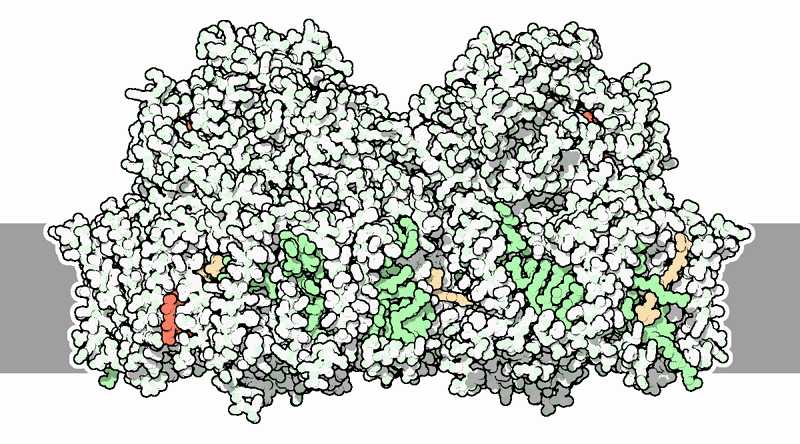|
Inhaltsübersicht | Nanomaschinen | Moleküle | Programme | Kurse | Fun | Links |
||
| > |
Photosystem II
Three billion years ago, our world changed completely. Before then, life on Earth relied on the limited natural resources found in the local environment, such as the organic molecules made by lightning, hot springs, and other geochemical sources. However, these resources were rapidly being used up. Everything changed when these tiny cells discovered a way to capture light and use it to power their internal processes. The discovery of photosynthesis opened up vast new possibilities for growth and expansion, and life on the earth boomed. With this new discovery, cells could take carbon dioxide out of the air and combine it with water to create the raw materials and energy needed for growth. Today, photosynthesis is the foundation of life on Earth, providing (with a few exotic exceptions) the food and energy that keeps every organism alive.

The Colors of Photosynthesis
Modern cells capture light using photosystem proteins, such as the one pictured here from PDB entry 1s5l. These photosystems use a collection of highly-colored molecules to capture light. These light-absorbing molecules include green chlorophylls, which are composed of a flat organic molecule surrounding a magnesium ion, and orange carotenoids, which have a long string of carbon-carbon double bonds. These molecules absorb light and use it to energize electrons. The high-energy electrons are then harnessed to power the cell.Energetic Electrons
Photosystem II is the first link in the chain of photosynthesis. It captures photons and uses the energy to extract electrons from water molecules. These electrons are used in several ways. First, when the electrons are removed, the water molecule is broken into oxygen gas, which bubbles away, and hydrogen ions, which are used to power ATP synthesis. This is the source of all of the oxygen that we breathe. Second, the electrons are passed down a chain of electron-carrying proteins, getting an additional boost along the way from photosystem I. As these electrons flow down the chain, they are used to pump hydrogen ions across the membrane, providing even more power for ATP synthesis. Finally, the electrons are placed on a carrier molecule, NADPH, which delivers them to enzymes that build sugar from water and carbon dioxide.Next: The Reaction Center
Last changed by: A.Honegger,